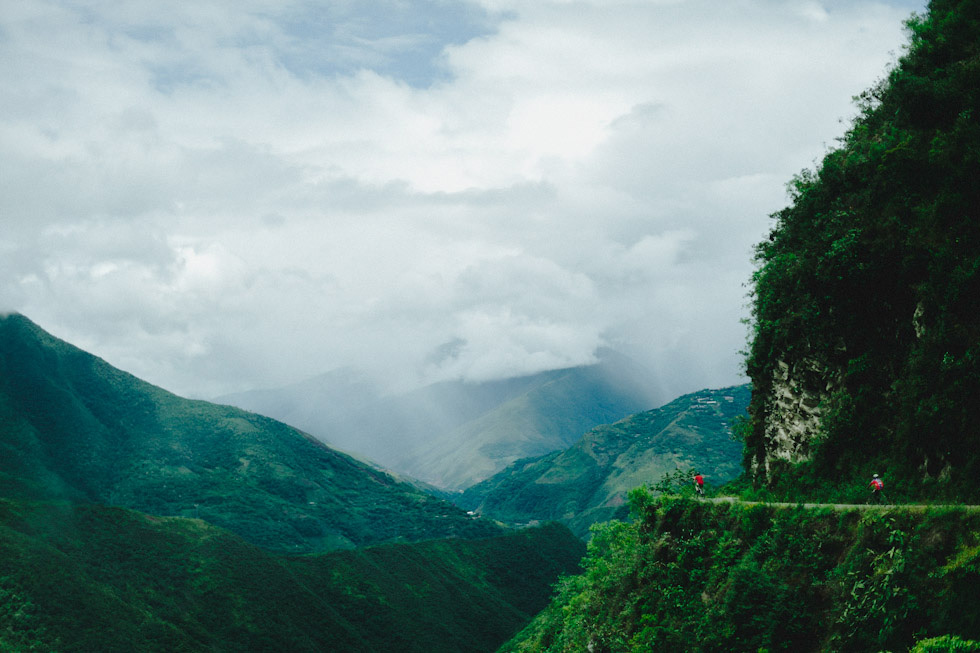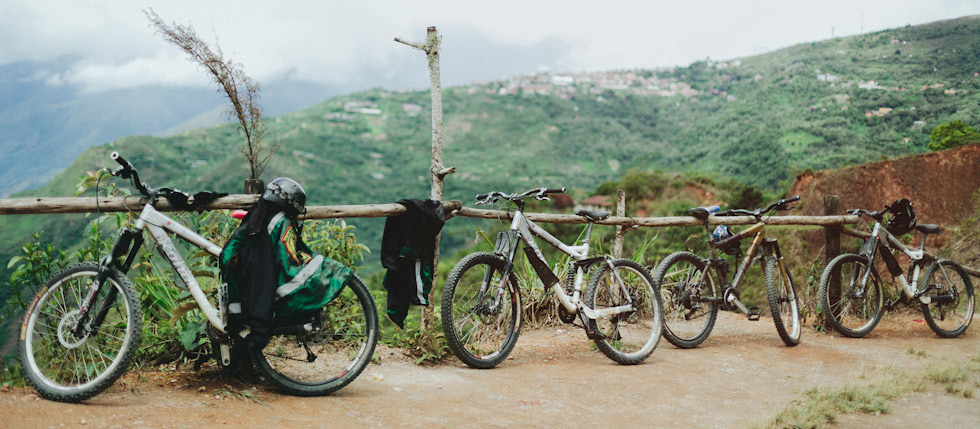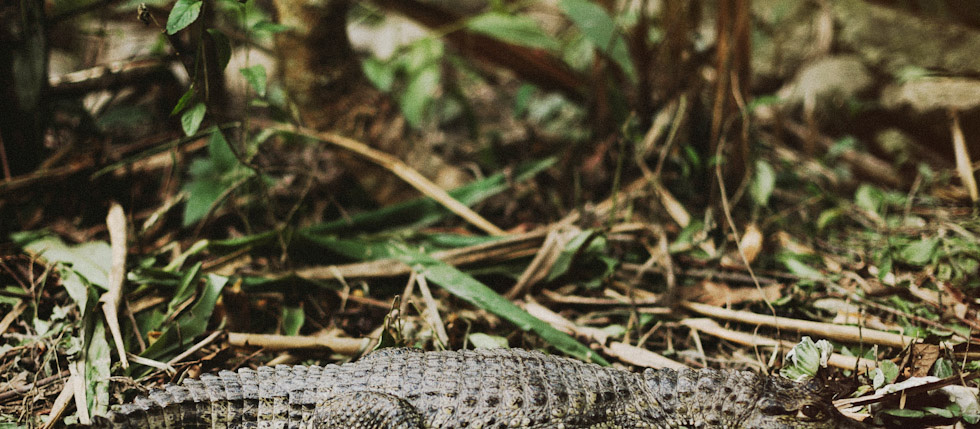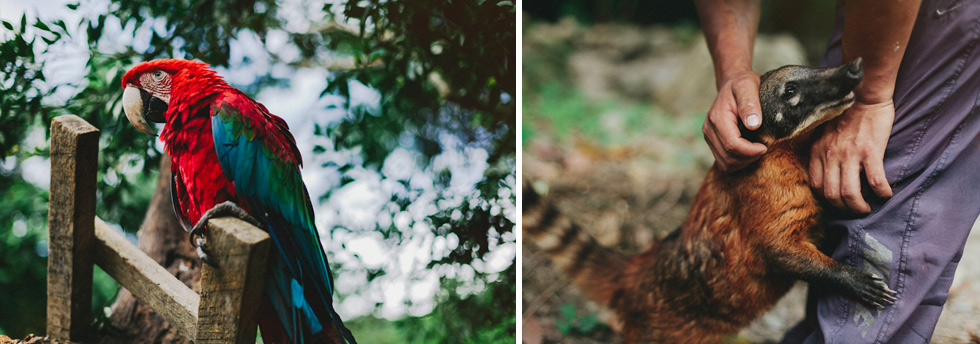La Paz & Death Road
Leaving Copacabana was a bittersweet experience as our time spent there was both relaxing and invigorating. Between the plush accommodations and stunning vistas, the weather seemed to mirror our regrets as we travelled by bus once again towards the (political) capital city of La Paz. As we travelled towards the highest capital city in the […]
Leaving Copacabana was a bittersweet experience as our time spent there was both relaxing and invigorating. Between the plush accommodations and stunning vistas, the weather seemed to mirror our regrets as we travelled by bus once again towards the (political) capital city of La Paz. As we travelled towards the highest capital city in the world, our bus windows acting as portals to the rural landscape, we saw farmsteads and small towns whiz by with greater frequency. Most of the buildings looked to be in various states of construction (and/or disrepair), which worried us slightly as we had no idea what to expect from our next destination. Political graffiti riddled many of the walls and rock formations and much of it seemed to be from elections long past.
Somewhere in the middle of our small journey we were asked to disembark from the bus so that we could cross a small channel of water via boat. Our bus was to cross on what looked like a barge that was only held together by hopes and dreams. As everyone crossed on smaller motor boats for a minimal fee, we all apprehensively watched as our bus was loaded onto the barge. To our collective relief the barge made it across without any trouble and our group was as relieved to this fact as they were to once again escape the rain that had set in.
Once again on our way, the rolling hillsides dotted with farms and agricultural fields slowly gave way to towns which grew in size. Finally losing site of nature altogether we realized that we had entered the bordering city of El Alto where the roads seemed to melt into unmanaged dirt pathways. It soon dawned on us that (at least along this particular road) almost every other storefront was an automobile repair shop. Beat up cars who have seen countless miles of travel had to be maintained somewhere and this meant that everyone was in need of a good repairman.
Before too long our bus crested one side of the giant mountain bowl that cradles La Paz and everyone was quick to crowd to that side of the bus to catch a glimpse of the metropolis. And a metropolis is exactly what lay out before us. Tall buildings in the center of the bowl reached for the heavens as a bustling and relatively modern city filled our vision. Eager to escape our mobile confines we got off the bus and found the first taxi we could to take us to our hostel where we could unload our belongings and being our exploration of the city.
Before taking in the sights we scheduled a guided excursion down the “Road of Death” or Calle Muerte, which is so aptly named because of its high instances of fatal accidents before a much safer and modern highway was put into place. Having sorted that out we took to the streets for some food and to absorb the culture. The Witch’s Market filled the streets close to our hostel and reminded us both of the Summer Nightmarket back home. Baubles and knock off merchandise could be had for ultra cheap and was literally exploding from every corner of each of the countless stalls. Another thing we noticed was that the churches seemed to have taken on a different tone than those of Peru in that they appeared more stark and cold (but at the same time no less inviting).
Waking early the next day we joined a younger group of tourists to start the biking tour down the Calle Muerte. Highway melted into unregulated gravel roads. One could instantly tell that the roadway was dangerous as there were numerous locations where memorials had been erected in the memory of those lost. Undeterred the group pressed on and was rewarded by warmer and dryer temperatures as foggy and wet mountain tops changed into tropical rain forests. Stunning waterfalls and green landscapes stretched as far as the eye could see as we all descended to our destination where an animal reservation and late lunch awaited us. I could not more strongly convey how incredible the reserve was as there were animals to interact with that you might only read about in nature books or see on TV. Small spider monkeys and baby orangutanes await you as well as tropical toucans and parrots. Caymens, turtles and dozens of other species all call this place home and you can see them for a small free that is well worth the price (and also goes towards funding the nature reserve). There is nothing quite like petting a red ring tailed coati or holding a monkey.
Leaving rather reluctantly, we started the long journey back to civilization where most of the group agreed that the bus seemed like an even more dangerous way to travel on Death Road than biking had been! Capturing a few last images of La Paz at night we turned in for a well deserved rest.
This is unfortunately also where my leg of the journey through Peru and Bolivia ended as I was due back to my relatively mundane life. Tomasz would continue his travels further south through even more exotic locales.
Written by AJ Kwong


























@ 2026 Tomasz Wagner Photo & Films, est. 2010
Tomasz Wagner is a wedding photographer
based on the West Coast, documenting celebrations worldwide